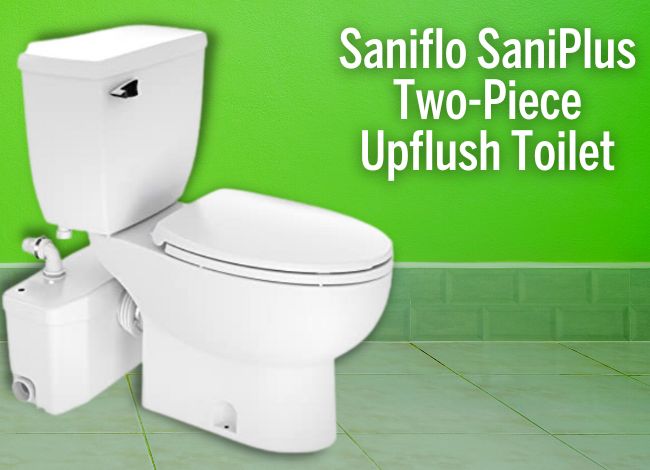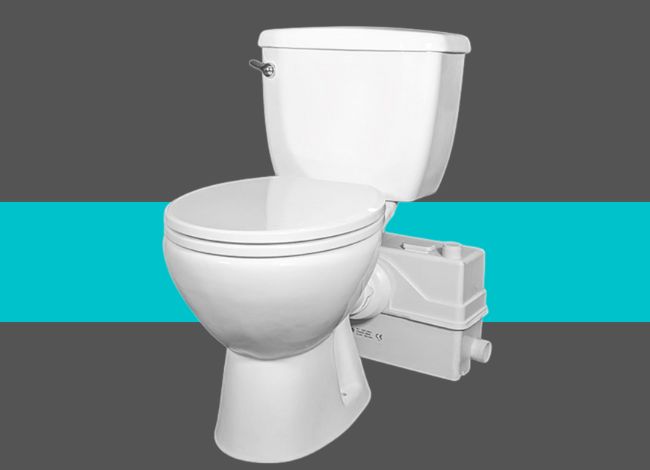
Macerating toilets, also known as upflush toilets, are a modern innovation in bathroom plumbing systems. Unlike traditional toilets that rely solely on gravity to carry waste through downward-facing drain pipes, macerating toilets use a powerful pump system to grind solid waste into a slurry, which is then pumped up or horizontally to the main drain line. This makes them ideal for basements, garages, or locations below the main sewer line where conventional plumbing is not feasible.
One of the key benefits of macerating toilets is that they use less water than standard toilets, making them an eco-friendly option for areas with limited water resources. Inside the unit, sharp blades pulverize waste, turning it into a liquid that’s easy to transport through narrow pipes. The waste is first collected in a chamber, then pumped out efficiently once it reaches the required consistency. This pump-driven system is the core of a macerating toilet’s functionality and must be of high quality to ensure longevity and reliable performance.
How Long Do Macerating Toilets Last?
When properly maintained, a macerating toilet system can last over 10 years. However, its lifespan depends on factors such as usage habits, frequency of use, brand reputation, and the quality of materials used in its construction. Harsh usage or neglecting regular maintenance can significantly reduce its durability.
What Is Venting in Macerating Toilets?
Venting is essential in any toilet system, but especially in macerating toilets. Since these systems use less water, there’s a greater risk of unpleasant odors accumulating within the unit. Proper ventilation ensures that foul smells are directed out of the home, maintaining a hygienic and odor-free bathroom environment.
Moreover, venting helps regulate air pressure within the drainage system. Without a proper vent, flushing could create a vacuum that slows or blocks waste removal. The venting system balances pressure between the plumbing lines and atmospheric conditions, preventing sewer gases from backing up and improving the overall performance of the toilet.
In most cases, macerating toilets are vented through the roof to allow gases to escape safely. While some models come with charcoal filters as a temporary solution, connecting to a dedicated vent pipe is highly recommended for long-term efficiency and health safety.
How Does It Work?
Macerating toilets require proper venting to function efficiently and hygienically. Vent pipes, often installed vertically through the ceiling or roof, are designed to channel foul odors and sewer gases out of the bathroom. This roof venting system ensures that unpleasant smells do not accumulate indoors and that the pressure within the plumbing system remains balanced.
A roof vent helps release sewer gases from the macerating toilet system by allowing fresh air to enter the drainage pipes. This equalizes air pressure, prevents vacuum effects in the plumbing lines, and helps wastewater flow smoothly through the system. Without adequate venting, users may experience issues such as slow drainage, gurgling noises, or persistent bad smells—common signs of poor ventilation or clogged pipes.
Macerating toilets, which use minimal water to process waste, are especially prone to producing foul odors if not properly vented. That’s why proper household ventilation is essential when installing a macerating toilet.
How Important Is Roof Venting for a Macerating Toilet?
Roof venting is crucial for maintaining the efficiency and hygiene of macerating toilet systems. While some systems may offer alternatives like side-wall venting, most plumbing codes recommend or require vertical roof vents to ensure optimal airflow and odor removal.
In fact, plumbing codes in many regions mandate roof venting for macerating toilets to comply with health and safety standards. This is particularly important because macerating toilets often handle waste under pressure and require efficient gas displacement.
Although some advanced macerating toilets, such as the Sanicompact, are designed to function with internal vent filters, roof venting is still preferred for long-term performance. The primary plumbing stack should connect to a manufacturer-approved venting system, and if a roof vent is not feasible, consult local building codes for approved alternatives.
Keep in mind: installing a roof vent not only supports better odor control but also helps avoid plumbing malfunctions like backflow, slow drainage, or sewer gas buildup.
Why Do Macerating Toilets Need to Be Roof-Vented?
When it comes to installing a macerating toilet, one critical component that homeowners often overlook is proper venting—especially roof venting. Roof venting is essential because it allows sewer gases to escape safely and supports smooth waste removal. Without it, unpleasant odors, pressure imbalances, or even drainage issues can arise. Whether you’re remodeling a basement or adding a bathroom far from the main plumbing stack, a roof-vented macerating toilet is an efficient and hygienic solution.
Which Roof-Vented Macerating Toilets Are the Best?
There are plenty of macerating toilets available in the market, but not all deliver top-tier performance. Below, we highlight two of the best roof-vented macerating toilets that offer durability, efficient waste removal, and excellent odor control.
1. Saniflo SaniPlus Two-Piece Upflush Toilet
The Saniflo SaniPlus is a popular two-piece macerating toilet designed for basement or half-bath installations. It features a powerful pressure pump with an automatic overflow protection system. The stainless-steel macerator blades are sharp and durable, ensuring long-term performance. Being ADA-compliant, this model is suitable for elderly users or individuals with disabilities.
✅ Why It Stands Out:
- Dual impeller and macerator blade system ensures thorough waste breakdown.
- Minimal moving parts reduce the risk of mechanical failure.
- Motor components are continuously lubricated, preventing rust.
- Operates at 3,600 RPM, allowing for quick and efficient waste disposal.
- Compatible height and modern SaniPlus technology provide comfort and reliability.
- The roof venting system efficiently expels foul odors and moisture.
- Water-efficient at 1.6 GPF (gallons per flush).
2. Lift Assure American Macerating Toilet
The Lift Assure macerating toilet is another high-performance choice, featuring a dual-flush system for water conservation. It includes everything needed for installation—macerator pump, toilet bowl, seat, screws, and valves. Operating on 120V, it’s plug-and-play for most households. Its efficient venting system ensures a clean, odor-free bathroom environment.
✅ Why It’s Worth the Investment:
- Includes three inlet ports, allowing connections from a toilet, sink, or bathtub.
- Powerful 800W pump with a three-stage maceration system.
- Enhanced impeller blades tackle tough clogs and break down toilet paper and sanitary items with ease.
- Soft-closing lid adds comfort and style.
- Elongated bowl design for extra seating comfort.
- Compatible with standard roof venting systems to eliminate moisture and odors effectively.
Final Thoughts
Proper venting is essential when installing a macerating toilet. While the installation process is relatively straightforward, the vent system must not be skipped, as it plays a crucial role in odor control and plumbing efficiency. Whether you’re building a basement bathroom or remodeling an existing space, roof-vented macerating toilets like Saniflo SaniPlus and Lift Assure offer excellent performance and comfort. Investing in a well-vented system will enhance your bathroom experience and keep your home smelling fresh.
We are really lucky to have a hard-working, multi-skilled plumber on our team. Collin D. Gallegos, a professional plumber who has worked with us since 2012, is an expert in vent, septic, and drainage systems. He is a Certified Master Plumber and has worked on various commercial plumbing projects. He usually helps our readers resolve plumbing and pipe-related issues with a proper DIY troubleshooting and repair guide.